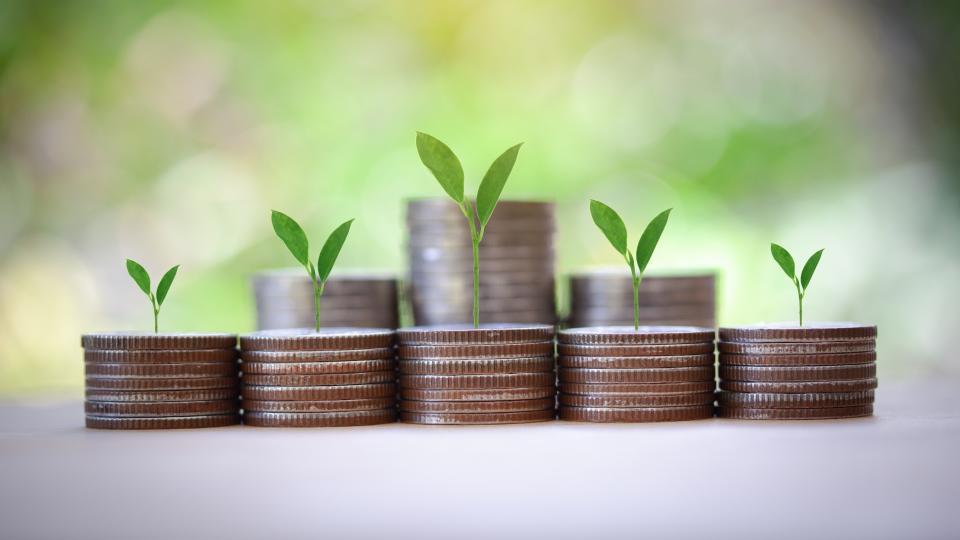How To Save Your First $50,000

Ambitious but achievable goals are one of the cornerstones of financial success — and $50,000 in savings fits the bill. In a country where most people have nothing or close to nothing in the bank, it’s certainly a lofty aspiration. But with a bit of planning, some discipline and plenty of patience, $50,000 is a climbable mountain.
Find Out: Here’s How Much Money Experts Say You Should Have in Your Savings Account If You’re in Your 50s
See: How To Build Your Savings From Scratch
Track Your Spending
At the start of your journey, $50,000 might feel like all the money in the world. Don’t worry. There are smaller goals to pursue along the way to break up the marathon into manageable sprints.
Step one is easy — just keep living the way you’ve been living. But this time, keep an eye on every dollar you spend while you do it.
“Someone on top of their finances will periodically track all expenses for a week or two to understand where their money really goes,” said Kyle Enright, president of Achieve Lending. “There often are surprises.”
Check Out: Why Stealth Wealth Is the Best Way To Handle Your Money
Create a Saving-Centric Budget
Your expense-tracking period will reveal opportunities to reduce unnecessary spending, which you can steer toward accelerated saving as part of a disciplined budget. Creating one is next on your list.
“People often talk about ‘sticking to the budget,’ but not everyone actually has one written out to stick to,” Enright said. “Create a simple monthly budget using an app, spreadsheet, online program or just pencil and paper.”
Choose a pay-yourself-first strategy that puts a heavy emphasis on saving. The popular 50/30/20 model, for example, dedicates 50% of your income to needs, 30% to wants and 20% — one dollar out of every five — to savings.
Build an Emergency Fund as the Foundation for Your $50K
Before you work toward your big goal of $50,000, start with the smaller task of saving enough money to get you through a few months. Don’t worry, it counts toward your $50,000 — just don’t make yourself do it twice by drawing from it unless there’s absolutely no other way.
“Emergency funds should only be used for unexpected financial hardships, such as losing your job or business income or having significant medical expenses not covered by insurance,” said Laura Adams, MBA, a personal finance expert with Finder.com. “If you’re considering purchasing something you want but don’t genuinely need, like a vacation or any luxury item, it’s better to save for it instead of draining your emergency fund.”
Eliminate Debt Before You Go All-In on Saving
Racing toward a well-stocked emergency fund comes first even if your credit cards are in bad shape. That’s because if you pay down debt before you build savings, you’ll have no choice but to erase your progress and use more credit if an expensive surprise pops up.
Once you have a few grand in a rainy day fund, keep saving, but dedicate a greater percentage of your leftover cash to paying down debt. With the average credit card interest rate approaching 25%, you’ll always hemorrhage more to toxic debt than you’ll gain from saving or even investing.
“That is a lot of money to be paying a credit card issuer,” Enright said. “Plus, it means you’re paying that much more than the purchase price of the item you charged. And if you’re not paying interest, you have that much more available to put toward savings.”
Make Your Non-Emergency Cash Work Harder for You
With some cash in savings and your debt eliminated or at least corralled, you can now afford to take a little more risk in pursuit of better returns and a faster path to $50,000.
Your emergency fund should stay in a savings account, where it’s instantly accessible and earning a modest yield with the principal protected by the security of FDIC insurance.
But every dollar beyond that can go into a no-fee brokerage account that allows fractional-share investing. When you don’t have to save for the cost of a whole share, you can use dollar-cost averaging, a strategy that lets you contribute a regular amount on a set schedule so that you buy more shares when stocks are cheap and less when they’re expensive.
If you’re not savvy with stocks, stick with a low-cost ETF that tracks a major index like the S&P 500.
Today’s best savings accounts offer yields approaching 5%, but the stock market has more than doubled that with an average 10% annual return over the last 50 years.
Or, Save $25,000 and Then Wait a Decade
If you start with $1,000 and contribute $175 a month, 10% average returns will get you to $50,000 in 12 years — sooner if you count what’s in your emergency fund.
The same initial and ongoing contributions with the same rate of return will get you to $25,000 in 7.5 years — and if you don’t mind taking it slow, you can consider your work done.
The rule of 72 says that even a comparatively modest return of 7% will turn $25,000 into $50,000 in a little over a decade (72/7=10.29). If you get the full 10%, you can get to $50,000 in a little over seven years.
If you can extend your time horizon another 10 years, you can switch that $25,000 to autopilot and redirect your ongoing contributions to something else like starting a business while the money doubles on its own.
More From GOBankingRates
This article originally appeared on GOBankingRates.com: How To Save Your First $50,000

 Yahoo Finance
Yahoo Finance 